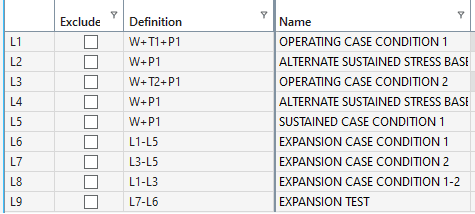RadiateurFou
Mechanical
- Feb 12, 2024
- 54
Hello,
Flexibility analysis : I have an operating case OPE1 = T1 + W + P1 and another one OPE2 = T2 + W + P1.
I get two expansion cases : EXP1 = OPE1 - SUS and EXP2 = OPE2 - SUS
I then can get a final expansion case to get the full range case between T1 and T2 : EXP3 = EXP1 - EXP2.
What is the difference between EXP3 and just doing OPE1 - OPE2 directly?
(Example above is just here to illustrate)
Thanks in advance
Flexibility analysis : I have an operating case OPE1 = T1 + W + P1 and another one OPE2 = T2 + W + P1.
I get two expansion cases : EXP1 = OPE1 - SUS and EXP2 = OPE2 - SUS
I then can get a final expansion case to get the full range case between T1 and T2 : EXP3 = EXP1 - EXP2.
What is the difference between EXP3 and just doing OPE1 - OPE2 directly?
(Example above is just here to illustrate)
Thanks in advance

